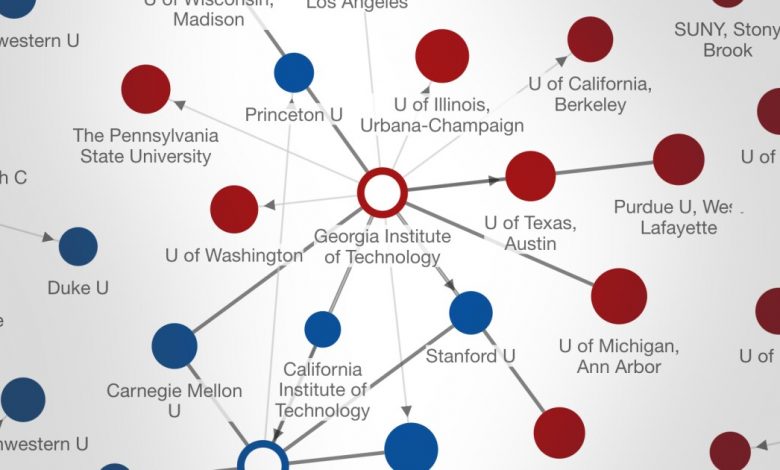Who Does Your College Think Its Peers Are?

Each year, universities choose their peer institutions when reporting their data to the U.S. Department of Education’s Integrated Postsecondary Education Data System, or Ipeds. In return, they receive a customized report that compares their performance to that of their selected peers on various measures, like enrollment, graduation rates, and average staff salaries.
The Chronicle compiled the peer institutions for nearly 1,500 institutions from the 2020-21 year. Explore to see whom your college considers to be its peers — and who thinks your college is its peer.
Public Special Focus and Tribal
Private Special Focus and Tribal
For-profit Special Focus and Tribal
Click an institution’s circle below to select it for comparison.
Click once to show institution name. Click again to select it.
x
Georgetown University
This college did not submit a list of peer institutions.
34 colleges selected as peers by this college.
38 colleges selected this college as a peer.
24 peer colleges that also chose this college as a peer.
University
Peer institutions
| Admissions Rate | |
| Graduation Rate | |
| Enrollment |
x
George Washington University
This college did not submit a list of peer institutions.
34 colleges selected as peers by this college.
38 colleges selected this college as a peer.
24 peer colleges that also chose this college as a peer.
University
Peer institutions
| Admissions Rate | |
| Graduation Rate | |
| Enrollment |
Methodology
Custom peer groupings and institutional data are from the National Center for Education Statistics’ Integrated Postsecondary Education Data System for 2020-21. The peer groups are self-selected by the institution.
Data includes public, private nonprofit, and private for-profit degree-granting four-year higher-education institutions in the United States that were eligible to receive Title IV federal financial aid in 2019-20 and had a first-time, first-year undergraduate enrollment of 100 students or more. Institutions from the following 2018 Carnegie classifications are included: doctoral universities, master’s colleges and universities, baccalaureate colleges, baccalaureate/associate colleges with mixed baccalaureate/associate, special focus four-year, and tribal colleges.
Some institutions appear in the display without any peers chosen because they did not submit a list of peer institutions. The length of any line connecting one institution to another is intended to serve display purposes only, and should not be construed as representing a particular value.
Enrollment numbers represent total full-time students. Graduation rates represent students who received a bachelor’s or equivalent degree within six years. Cohorts were adjusted to exclude students who died, were permanently disabled, or left college to serve in the military or with a foreign-aid agency or official church mission. Students who transferred and then graduated from another institution are not counted in the data as having graduated. Admission rates represent first-time, degree/certificate-seeking students.
Source link






